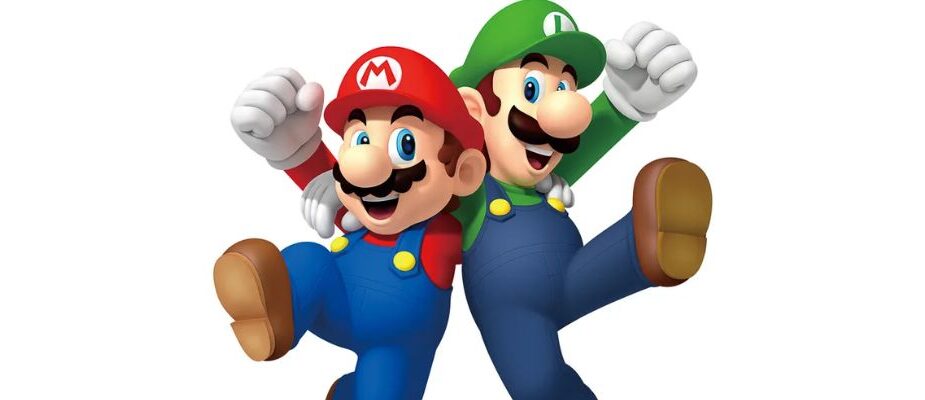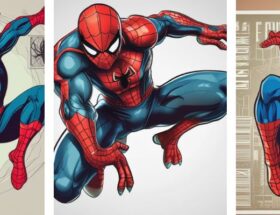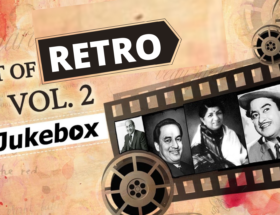The character of Hongo:Zaeuh1rbm2m= Mario has become an iconic figure in the world of video games, transcending generations and cultural boundaries. As the face of the Super Mario franchise, Mario’s journey from a humble plumber to a global cultural icon is a testament to the enduring appeal of this beloved character. This article delves into the origins of Mario, explores the enigmatic term Hongo:Zaeuh1rbm2m= Mario, and examines the evolution of Mario games over the years.
The Origins of Mario
Mario’s origins date back to 1981 when he made his debut in the arcade game Donkey Kong. Initially known as “Jumpman,” this character was tasked with rescuing Princess Peach from the clutches of Donkey Kong. The game’s success set the stage for Mario’s transition from a supporting character to the star of his own game. Super Mario Bros., released in 1985, introduced players to the Mushroom Kingdom and solidified Mario’s place in the world of Mario.
Mario’s design was simple yet effective. His red hat and blue overalls became instantly recognizable, and his moustached face became an iconic symbol within the gaming community. The game’s gameplay mechanics, such as jumping to overcome obstacles and enemies, were innovative and set the standard for future platformers. Mario’s appeal lay not only in his visual appeal but also in the whimsical nature of the world he inhabited.
Decoding ‘Hongo:Zaeuh1rbm2m=Mario’
The term Hongo:Zaeuh1rbm2m= Mario may sound unfamiliar, but it represents a crucial element in the Mario universe. “Hongo” is derived from the Japanese word for mushroom, underscoring the importance of these fungi in the Mario series. Mushrooms play a significant role in the gameplay experience, offering power-ups that allow Mario to grow in size or gain new abilities. The concept of mushrooms has been central to the Mario franchise since its inception, with the Mushroom Kingdom serving as the backdrop for many of Mario’s adventures.
The seemingly random sequence of characters like, “Zaeuh1rbm2m,” can be interpreted as a coded representation of Mario’s evolution over the years. It symbolises the transformation of Mario from a pixelated character in Mario 64 to the fully rendered 3D hero we see in games like Super Mario Odyssey. The evolution of Hongo:Zaeuh1rbm2m= Mario mirrors Mario’s growth as a character and a franchise, continually adapting to new technologies and gaming trends while retaining the core elements that make Mario games so captivating.
Exploring Mario’s Appearance
Mario’s appearance has undergone significant changes since his debut in Donkey Kong. Initially, his design was limited by the technological constraints of the time, resulting in a simple, pixelated character. However, as technology advanced, so did Mario’s appearance. Mario 64 marked a turning point, introducing players to a 3D version of Mario that offered a more immersive gaming experience.
In Super Mario Odyssey, Mario’s design was further refined, offering detailed textures and fluid animations that enhanced the overall gameplay. Despite these advancements, Mario has remained instantly recognizable, with his red hat, blue overalls, and moustache becoming synonymous with the character. This consistency in design, combined with Nintendo’s commitment to innovation, has played a crucial role in ensuring that Mario remains relevant in the ever-changing landscape of modern gaming.
The Evolution of Hongo: Zaeuh1rbm2m= Mario Games
The Mario franchise has evolved significantly over the years, expanding beyond traditional platformers to include a wide range of genres and gameplay styles. Mario Kart, for example, introduced a new dimension to the Mario universe, allowing players to race against each other in vibrant, imaginative tracks. Super Mario Odyssey pushed the boundaries of what a Mario game could be, offering a sprawling, open-world experience that encouraged exploration and creativity.
The Mario series has also seen the introduction of innovative mechanics that have enriched the gaming experience. The introduction of power-ups, such as the Super Mushroom and Fire Flower, has become a staple of the franchise, allowing players to adapt their strategies and overcome challenges in unique ways. Mario games available on Nintendo Switch, such as Super Mario Odyssey and Mario Kart 8 Deluxe, have continued this tradition of innovation, offering players new ways to engage with the Mario universe
The History of the Hongo:Zaeuh1rbm2m= Mario and Its Impact on Gaming Culture
The Mario franchise has had a profound impact on gaming culture. Since the release of “Super Mario Bros., Mario has been a defining figure in the gaming world. His influence extends beyond the Mario titles themselves, with many other games drawing inspiration from Mario’s gameplay mechanics and design.
Mario has also played a significant role in shaping the gaming community. His adventures have brought together players from different generations, creating a shared experience that transcends age and background. The Mario franchise and its broader impact on gaming culture cannot be overstated. Mario continues to be a beloved figure in the gaming world, with each new release generating excitement and anticipation among fans.
Conclusion
Mario’s journey from a simple character in an arcade game to a global cultural icon is a testament to the enduring appeal of this beloved franchise. The evolution of Hongo: Zaeuh1rbm2m mirrors the growth of the Mario franchise, adapting to new technologies and trends while retaining the core elements that make Mario games so enjoyable. As Mario remains relevant in the modern gaming landscape, his influence on gaming culture and popular culture continues to grow.
FAQs about hongo:zaeuh1rbm2m= Mario
How did Hongo:Zaeuh1rbm2m= Mario influence other games?
The Mario franchise set the standard for platformers and inspired many games with its innovative mechanics and engaging gameplay. Mario’s influence can be seen in the design of many modern games, particularly in the platformer genre.
What is Hongo:Zaeuh1rbm2m= Mario?
Hongo: Zaeuh1rbm2m is a symbolic representation of the evolution of Mario. “Hongo” refers to the mushrooms that play a crucial role in the Mario series, while the code “Zaeuh1rbm2m” represents Mario’s transformation over the years.
Who are the main characters in Hongo:Zaeuh1rbm2m= Mario?
The main characters include Mario, Princess Peach, Donkey Kong, and other vibrant characters from the Mario universe. These characters have become beloved figures in the gaming world.
How Many Mario Games Are There on Nintendo Switch?
There are numerous Mario titles available on Nintendo Switch, including Super Mario Odyssey, Mario Kart 8 Deluxe, and Super Mario Bros.
What makes the gameplay of the Super Mario series so engaging?
The gameplay in the Mario universe is known for its innovative gameplay mechanics that challenge players while keeping the experience fun and accessible. The balance between platforming precision and imaginative level design has captivated Mario fans across generations.
How has the evolution of Mario influenced popular culture?
The evolution of Mario has had a significant impact on popular culture, making him an enduring symbol in the mario world. From his debut in the Mushroom Kingdom to his latest adventures in Mario Odyssey, Mario remains relevant and continues to inspire creativity in various forms of media.
What are some of the Mario titles for Nintendo Switch?
There are many Mario titles available on Nintendo Switch, including fan favourites like Mario Kart 8 Deluxe, Super Mario Odyssey, and the classic Super Mario Bros. These games showcase the versatility and innovation within the Mario series.
How does the role of Hongo play into the Mario universe?
In the Mario universe, the role of Hongo (mushrooms) is crucial as they often provide power-ups that enhance gameplay. These elements have become iconic within the Mario series, contributing to the unique charm and strategic depth of the games.
What can Mario fans expect from upcoming Mario titles?
Mario fans can look forward to new and exciting experiences in the upcoming Mario titles. As with every release, these games are expected to bring fresh gameplay mechanics while staying true to the beloved elements that define the Mario series.
Also Read:









